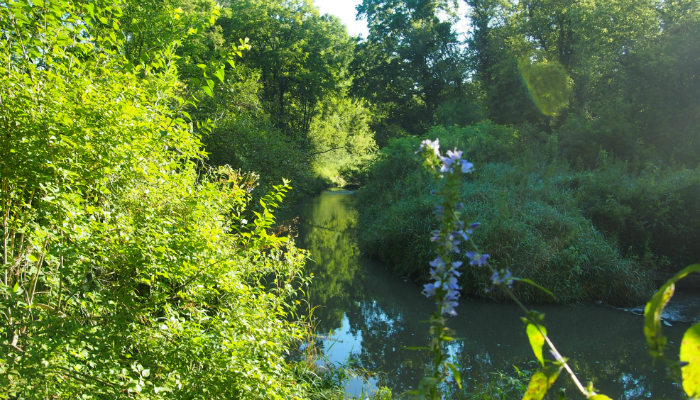Is Perpetuity Forever?

I’m taking a break by a small wetland pool, secluded in an area of willows with a small silver maple tree. The water is clear and occasionally, I catch movements of green frog tadpoles in the depths. The shoreline is crowded with rushes, sedges, grasses, and forbs highlighted in browns, yellows, golds, and reds by the fall sun. It’s beautiful, and it’s all a restoration.
Twelve years ago, it was just a wet, rutted farm field that produced little corn. Today, with shovel, native seed, persistent weeding, and nature’s grace, it’s a place of natural beauty. A place to search one’s mind; a place to reflect.
Several maple leaves land on the water’s surface, spin, and head off in different directions like ships without rudders. The movement of the leaves symbolizes my thoughts on the future of ecological restoration. Where is this all heading? Who will care for my land after I’m not able? Will there be younger generations that will pick up where we left off? Will our society of tomorrow be a better land steward than our society of today?
As a landowner engaged in ecological restoration, I know I’m not alone in my uncertainty of the future. I see it, feel it, hear it in conversations with peers, phrases like “maybe my son will help out someday” or “hopefully the next owner will carry on.” Sometimes, bone tired after laboring all day and emboldened by a beer, we take it on directly. We talk about foundations, conservation easements, endowments, land trusts, property taxes, and family heirs’ priorities. The words flow randomly, without focus or conclusion, tentatively seducing us to believe the solution will come sometime in the distant future.
How do we ensure a positive future for ecological restoration and all the lands under ecological restoration today? I believe that answer includes expanding our base of support, and building an industry around ecological restoration.
Given the small amount of land mass under restoration, the economic scale needed for success is not large. We already have many of the pieces of the “base,” such as landowners with ecologically valuable land, conservation groups, land trusts, successful examples of foundations and conservation easements, and a fledgling collection of restoration practitioner contractors. What is missing is large-scale public outreach, marketing, funding sources, and an industry model that facilitates a successful working relationship among all pieces of the base.
Landowners with ecologically rich land should not have to face the financial burden of protecting and maintaining the land alone. Young people schooled in natural resources need to see economically viable futures in the field of ecological restoration. We need outreach to the public so that they can find their “home” in ecological restoration. Not everyone needs to wield a chainsaw or identify plants in Latin, but we need to enable some to find and exercise their piece of the ecological restoration industry – to find their own ecological restoration identity.
With a successful public outreach, land trusts and conservation groups would have support from a broad set of professionals. This would enable more economic, and volunteer, resources to be available for both land protection and land management. Working with land trusts, landowners will have a straight forward path within their economic reach to protect and maintain their land into perpetuity. With funding for grants and endowments from a larger public base, people can work in the field of ecological restoration with a sense of financial security.
I focus back on the leaves on the water’s surface. There are many more now, bunched together in tight clusters. Do they represent a broader and cohesive set of tomorrow’s land stewards no longer steering without a rudder? Or are they a logjam of passionate but weary individuals, unable to find next steps?
Don’t be silly, I think as I return to work; they’re just leaves.
Originally published on Environmental Returns


